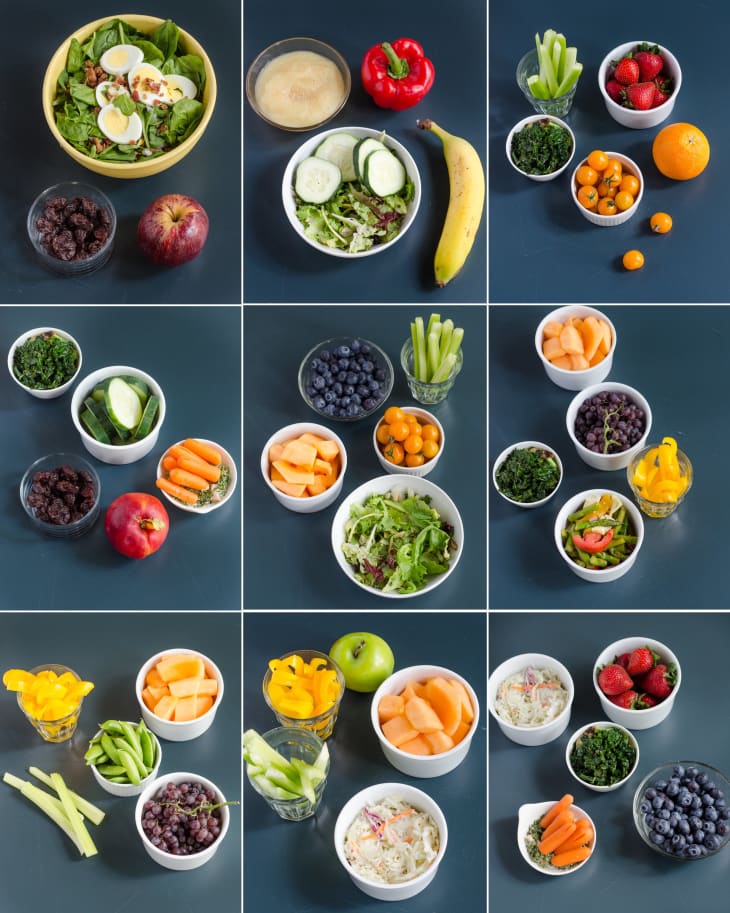5 Ways to Make Cut Fruits and Vegetables Last Longer
Keeping a stash of cut fruits and vegetables on hand has doubled my family’s produce consumption, and it also makes packing lunches and cooking dinner faster and easier. While there are some potential downsides to storing cut fruits and vegetables — they spoil faster and reportedly have fewer nutrients after a few days — I’d say the increase in actually eating up our produce is worth those negatives.
Here are five ways I’ve learned to make cut fruit and vegetables last longer.
1. Water
Storing cut fruits and vegetables in water seems counterintuitive, but it is a great way to store hardy vegetables like carrots, celery, and potatoes after they are cut. To prolong their freshness, always store in fresh cool water and change out the water every few days for even longer-term storage. Water even works to keep guacamole green and to store cut apples.
Read More: The Best Way to Keep Carrots Crisp and Fresh
2. Acidity
Many home cooks know that a little lemon juice in water can prevent apples from browning, but there are also a few products (like Ball’s Fruit-Fresh) that contain citric acid for preserving the appearance of fruit. You can mimic the results of these products (and add flavor) by tossing fresh fruits with a little lemon or lime juice or sprinkling vegetables with a spice mix like Tajín seasoning before storing.
3. Paper Towels
Paper towels and an airtight container is the best way to store salad greens (even cut romaine), but it also works well for peppers and strawberries. The towels wick away moisture while the container keeps spoilage at bay.
4. Freezing Them
Freezing cut fruits and vegetables is an especially easy shortcut for lunch fodder. It preserves the fruit and vegetables, but also keeps them cool in the lunch box. This works well for berries, corn, peas, carrot slices, and peppers.
Get the Details: How To Freeze Fresh Summer Fruit
5. Cooking Them
Let’s say that the peppers you cut on Sunday are looking a little sad on Wednesday — throw them in a hot oven to roast while you cook dinner and then use them the rest of the week in wraps or on scrambled eggs or sandwiches.
Turn cut berries or apples into a quick sauce with a little bit of water in a small saucepan on the stove — then add this fruit sauce to yogurt or smoothies throughout the week. That way your hard work doesn’t go to waste and you can still enjoy your daily intake of fruits and vegetables.
Do you have any tips and tricks for making cut fruits and vegetables last longer?
